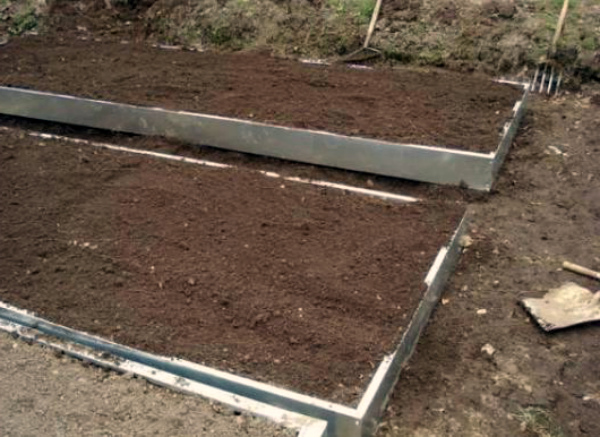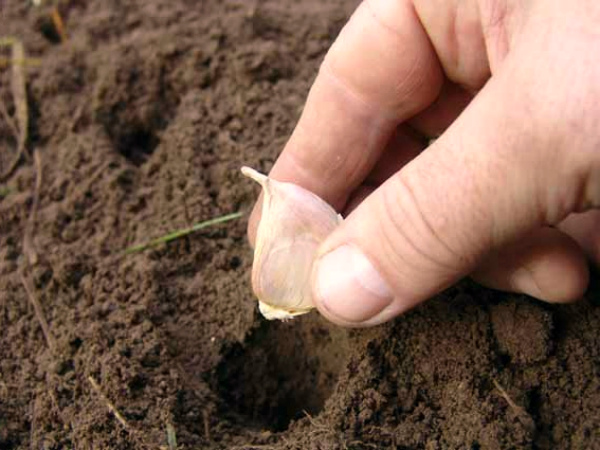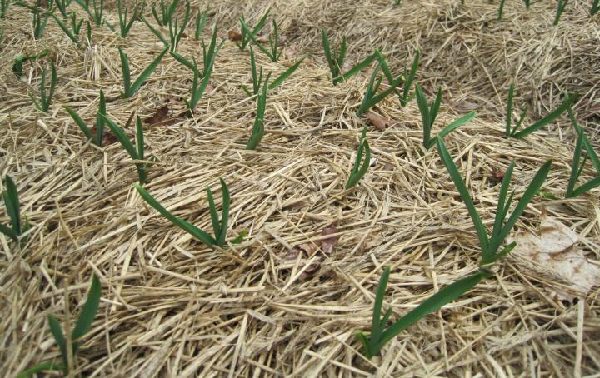How to grow large garlic: basic rules
Content
Which garlic to choose
It is known that garlic is spring (summer) and winter. The difference between them is not only in planting time, but also in the size of the bulbs. Winter varieties are distinguished by larger heads, while it is almost impossible to grow large garlic from spring varieties.
It is sometimes difficult for novice gardeners to distinguish winter varieties from spring ones. And this is a very important point, since winter varieties are planted in the garden in autumn, and spring varieties - in spring. If the tines are confused, you can not hope for a harvest at all. The main difference between winter garlic is the rod to which the prongs are attached, and most often its heads have an even number of cloves. Spring garlic does not have a rod, and the number of teeth can be different, moreover, they are much smaller in size than winter ones.
Of course, you can get a higher yield from winter varieties, but it must be borne in mind that such garlic is not stored for long - at most until February. Summer varieties are not so large, but their shelf life can be up to two years. For sale, it is more profitable to grow winter garlic, since it has a good presentation. But in order to consume the product until the next harvest, it is better to opt for summer varieties, among which there are also those with large heads.
For example, the Gulliver variety is a rather unusual representative of spring garlic - its heads, when properly grown, reach 90-115 g, moreover, it is prone to the formation of arrows, which is not typical for summer varieties. As for winter garlic, almost all of its varieties are distinguished by large heads: Sofievsky (90-110 g), Komsomolets (80-110 g), Losevsky (up to 75 g), Yubileiny (up to 80 g), Podmoskovny (from 60 g) and others.
Video "Giant Garlic"
See what specimens you can grow in your summer cottage.
Preparing the beds and garlic
A garden bed for planting winter garlic should be prepared in a month, at least 2-3 weeks in advance. For spring varieties, it is better to prepare the site in the fall. This is due to the fact that the culture does not really like fresh organic fertilizers, besides, it is not easy to dig up and feed the frozen soil in early spring.
First of all, you need to decide on a place for growing. It should be open, sunny, on a flat surface. If the garden is in a lowland, it is better to make an elevation (high bed) for the garden bed - this will help to avoid stagnant moisture. It is bad if the garden is located on a slope. In this case, there is a likelihood of soil washing away, which will also not have the best effect on the yield.
Garlic prefers loose sandy loam soil with neutral acidity. If your garden is not very fertile, suitable conditions must be created artificially. Acidic soil should be limed (1 glass of lime / 1 m²). To increase the drainage properties, you need to add sand, peat, sawdust. As a top dressing, humus is introduced (1 bucket / 1 m²), plus droppings 1 l / 1 m² and ash. Instead of droppings, you can use superphosphate (30 g / 1 m²) with potassium salt (20 g / 1 m²).
The soil together with fertilizers should be dug to a depth of 20–25 cm. Then the bed should be leveled and disinfected - sprinkled with a solution of manganese or salt (1 glass / 1 bucket of water). Next, cover the bed with foil and leave it until planting.
Seeds (teeth) also need preparation before planting in the garden. It is very important to choose the healthiest and largest specimens. The preparation of winter varieties consists in disinfecting the teeth with a 1% solution of copper sulfate. The teeth are placed in the liquid for literally 1 minute - this time is enough to destroy fungi and bacteria.
Summer garlic is often stratified (cooled). The teeth are kept in the refrigerator for 2-3 weeks, after which they are placed in a damp cloth and germinated. However, it often happens that by the spring the prongs sprout on their own. In this case, they can be immediately planted in the ground.
We plant garlic in spring and autumn
Planting time of a crop depends on its type. Winter garlic is planted in autumn, from late September to mid-October - about 1.5 months before the arrival of constant cold weather. During this time, the teeth will sprout and take root, but the sprouts will not have time to germinate to the surface.
Spring garlic is planted in early spring, immediately after the snow melts - in early or mid-April, depending on the climate. Summer varieties tolerate cold well and are able to germinate at a soil temperature of 6 ° C, moreover, they grow more actively in cold soil, and as the soil warms up, their growth slows down.
The sooner you plant a spring variety, the more chances you have to grow large heads.
Secrets of growing large garlic
There are several simple agronomic techniques for growing large garlic.
Timely landing
For planting winter varieties, you need to choose the time so that the teeth have time to take root before the onset of frost, but do not have time to grow. On average, this time interval falls on the end of September - beginning of October, but for each region it can be different. When sowing a spring variety, it must be borne in mind that the bulb must have time to form before the onset of heat - only in this case, you can count on large heads.
Compliance with crop rotation
It is not recommended to plant the culture in one place for more than 2 years in a row, and in order to obtain large bulbs, it is advisable to change the planting site every year.
Illumination
The beds should be placed in a well-sunlit place. Otherwise, small bulbs will grow.
Soil quality
For a crop, neutral acidity and good drainage properties of the soil are very important. In heavy and acidic soil, garlic bulbs will certainly grow small, or even disappear altogether.
The quality of the planting material
For planting, you should choose varieties intended for your region. When buying imported varieties of white garlic, remember that for transportation they are treated with special solutions that suppress root growth, so it is almost impossible to grow good large bulbs from such material.
Removing arrows
Some varieties of winter garlic produce arrows with seeds. If they are not removed in time, the plant will send all the juices to the ripening of the seed bulbs, which will affect the size of the heads. It has been noticed that plants with arrows left form heads in half.
Deep seating of teeth
Experienced gardeners advise planting slices to a depth of 5–7 cm in order to prevent them from freezing in winter and premature heating in spring. It is known that garlic grows faster in cold temperatures, while bulb growth stops in hot weather.
Too tight fit
The optimal distance for planting a crop is considered to be 20 cm between rows, and 8–10 cm between the teeth. If the distance is less, the bulbs will grow small.
Timely loosening
In the spring, when the snow has melted and the sun has sharply warmed up, a crust forms on the surface of the soil, preventing oxygen from reaching the roots. If the surface is not loosened in time, then the bulbs may lag behind in development.
Correct watering
During its active growth, the plant needs to maintain high soil moisture. While during the ripening period of the heads, on the contrary, high humidity harms it.
Mulching the garden
Mulch maintains soil moisture and eliminates the need for frequent watering in hot weather. If the summer is hot, it will not be possible to grow large heads without mulch.
Moderate feeding
During the growing season, the plant should be fed three times. Whatever fertilizer you choose - mineral or organic, it is important not to exceed the amount. If the plants are given a lot of organic matter, then the leaves will begin to turn yellow, and the heads will stop growing. If you feed in excessive amounts of mineral mixtures, the taste and quality of the bulbs will deteriorate.
And the last thing to pay attention to. Garlic is considered a perennial, or rather a three-year-old plant, but most gardeners grow it as an annual. This leads to the fact that over time it becomes smaller - it simply degenerates.
Update your planting material regularly. When planting winter varieties, leave a few arrows to obtain seeds, and then grow from them planting bulbs, consisting of one clove. In the third year, a large, full-bodied garlic head can be grown from such a clove.
Video "How to grow large winter garlic in the country"
This video describes and demonstrates a technology for growing large heads of garlic, which has shown itself to be excellent and gives an excellent harvest over the years.







